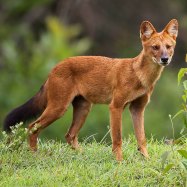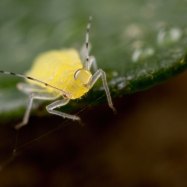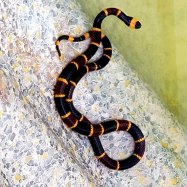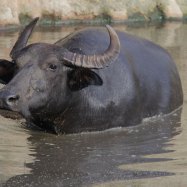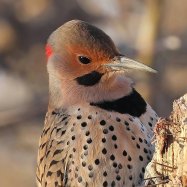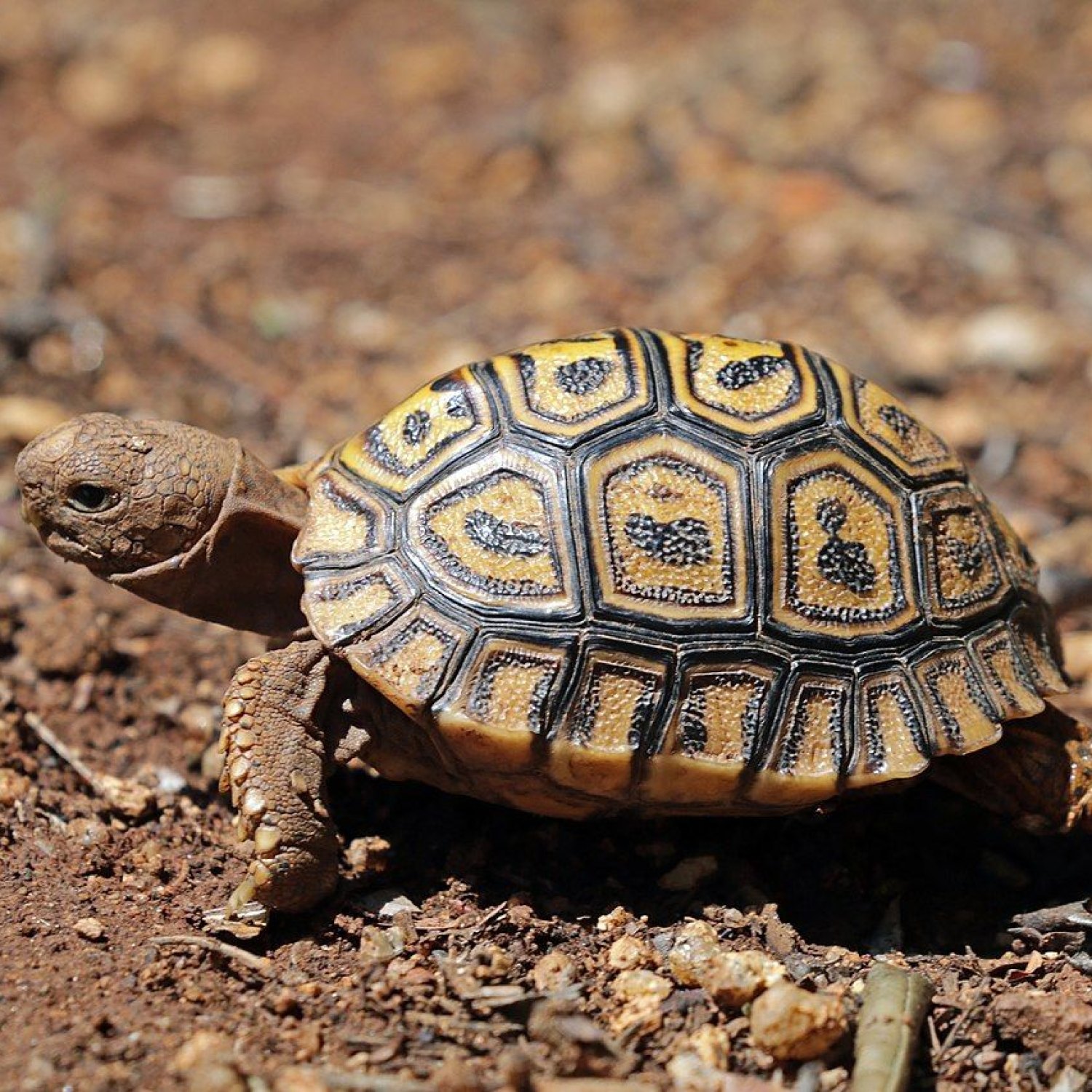
Leopard Tortoise
Up to 24 inches (60 cm)
The Leopard Tortoise, native to Savannahs, Grasslands, and Scrublands, can grow up to 24 inches in length. Its dome-shaped body and sturdy limbs make it a great digger and climber. A fascinating fact: they can live up to 100 years! #LeopardTortoise #Testudinidae #Savannahs #Grasslands #Scrublands
Animal Details Summary:
Common Name: Leopard Tortoise
Kingdom: Animalia
Habitat: Savannahs, Grasslands, and Scrublands
The Mighty and Magnificent Leopard Tortoise: Unveiling its Secrets
When we think of a leopard, we often imagine a fierce and agile predator, ready to pounce on its prey in the African savannah. But did you know that there is another creature in the African wilderness that shares the same name and is equally fascinating – the Leopard Tortoise? With its unique appearance and incredible adaptations, this reptile has captured the hearts of many animal lovers and continues to fascinate researchers in the field of natural sciences.The Science Behind its Name
Scientifically known as Stigmochelys pardalis, the Leopard Tortoise belongs to the animal kingdom Animalia, the phylum Chordata, and the class Reptilia. It falls under the order Testudines and the family Testudinidae Leopard Tortoise. Reptiles in this family are commonly known as tortoises. Interestingly, the name Stigmochelys comes from the Greek word 'stigma,' which means a mark or spot, and 'chelys' meaning tortoise, referring to the black spots on the animal's body. On the other hand, the species name pardalis is derived from the Latin word 'pardus,' meaning leopard, which highlights the striking similarities between this tortoise and the big cat.A Tortoise Unlike Any Other
Leopard Tortoises are large and dome-shaped reptiles, growing up to 24 inches (60 cm) in length. They are mostly found in the eastern and southern parts of Africa, where they thrive in the savannahs, grasslands, and scrublands. These tortoises have a unique coloration, with a yellowish-brown carapace (top shell) and a black and yellow pattern of spots. The boldly patterned shells provide them with excellent camouflage, making them almost invisible in their natural habitat.A Habitat to Survive
The habitat of a Leopard Tortoise plays a crucial role in its survival. These reptiles can be found in a wide range of environments, from arid regions to grassy lands, with a particular preference for dry and open habitats Lemon Blast Ball Python. They are known to spend most of their time in burrows, which they may dig or occupy pre-existing ones. These burrows protect them from predators and provide shelter from extreme temperatures and humidity.A Herbivore at Heart
One of the most remarkable features of the Leopard Tortoise is its feeding method – herbivorous. These reptiles have a diet mostly comprised of vegetation such as grasses, succulents, and even cacti. With their strong beaks and sharp claws, they can easily break and eat tough plants. These tortoises have also been observed feeding on animal feces, which surprisingly contains undigested plant materials. This behavior is known as coprophagy, and it helps the tortoises digest their food more efficiently.The Widespread Distribution
The Leopard Tortoise is found in eastern and southern Africa, in countries such as South Africa, Zambia, and Tanzania. In these regions, they play an essential role in the ecosystem as they help disperse seeds and control plant growth through grazing. However, due to their widespread distribution, they are also used for commercial purposes and are often found in the pet trade. This, coupled with habitat destruction and road accidents, has resulted in a decline in their population, making them vulnerable to extinction.The Role of Science in Conservation
To protect and conserve this magnificent tortoise, scientists have been studying their behavior, biology, and ecology. Through these studies, researchers have gained valuable insights into the life of leopard tortoises, which have contributed to their conservation efforts. For instance, scientists have found ways to determine the sex of tortoises by examining their plastrons (bottom shell) and have implemented measures to reduce the number of road accidents involving these reptiles.The Future of Leopard Tortoise Conservation
Protecting and preserving the Leopard Tortoise is crucial for maintaining the balance of the ecosystem and ensuring the survival of this unique species. While conservation efforts are ongoing, there are also ways for individuals to contribute towards saving this reptile. For instance, if you are considering adopting a tortoise as a pet, make sure it comes from a reputable breeder and not taken from the wild. This may reduce the demand for wild-caught tortoises and discourage the illegal pet trade.The Endless Wonders of the Leopard Tortoise
Apart from its striking appearance and incredible adaptations, the Leopard Tortoise is also known for its long lifespan. These magnificent creatures can live up to 100 years in captivity, making them one of the longest-living reptiles in the world. They have also been revered in different cultures as symbols of wisdom, patience, and longevity. The San people of Botswana, for example, believed that the tortoise carried the world on its back and was a symbol of fertility.In Conclusion
In this article, we have delved into the extraordinary world of the Leopard Tortoise, uncovering its scientific name, unique adaptations, and role in the ecosystem. We have also discussed the importance of conservation, as well as the efforts being made to protect these magnificent creatures. We hope that this article has provided you with valuable insights into the world of this remarkable reptile and has inspired you to take action towards its preservation. Remember, every small effort counts, and together, we can make a difference for the Leopard Tortoise and other endangered species living on our planet.

Leopard Tortoise
Animal Details Leopard Tortoise - Scientific Name: Stigmochelys pardalis
- Category: Animals L
- Scientific Name: Stigmochelys pardalis
- Common Name: Leopard Tortoise
- Kingdom: Animalia
- Phylum: Chordata
- Class: Reptilia
- Order: Testudines
- Family: Testudinidae
- Habitat: Savannahs, Grasslands, and Scrublands
- Feeding Method: Herbivorous
- Geographical Distribution: Eastern and Southern Africa
- Country of Origin: Eastern and Southern Africa
- Location: Savannahs, Grasslands, and Scrublands
- Animal Coloration: Yellow and brown with black spots
- Body Shape: Dome-shaped
- Length: Up to 24 inches (60 cm)
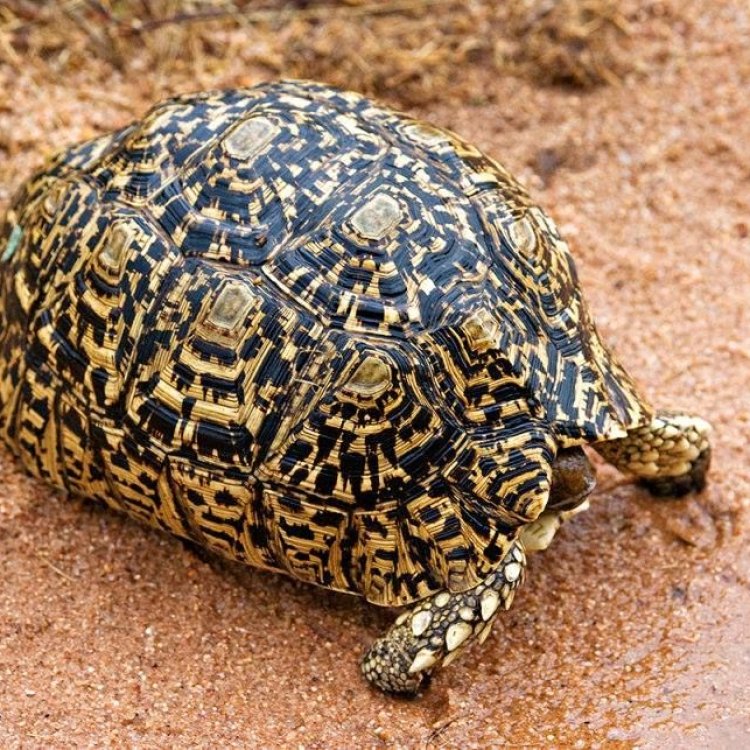
Leopard Tortoise
- Adult Size: Up to 24 inches (60 cm)
- Average Lifespan: Up to 100 years
- Reproduction: Oviparous
- Reproductive Behavior: Males engage in combat for mating rights
- Sound or Call: None
- Migration Pattern: Non-migratory
- Social Groups: Solitary
- Behavior: Diurnal and burrows for shelter
- Threats: Habitat loss and illegal pet trade
- Conservation Status: Vulnerable
- Impact on Ecosystem: Important in seed dispersal
- Human Use: Kept as pets and used for traditional medicine
- Distinctive Features: Distinctive high-domed shell with black and yellow markings
- Interesting Facts: Leopard tortoises are the fourth largest species of tortoise in the world.
- Predator: Lions, hyenas, and large birds of prey
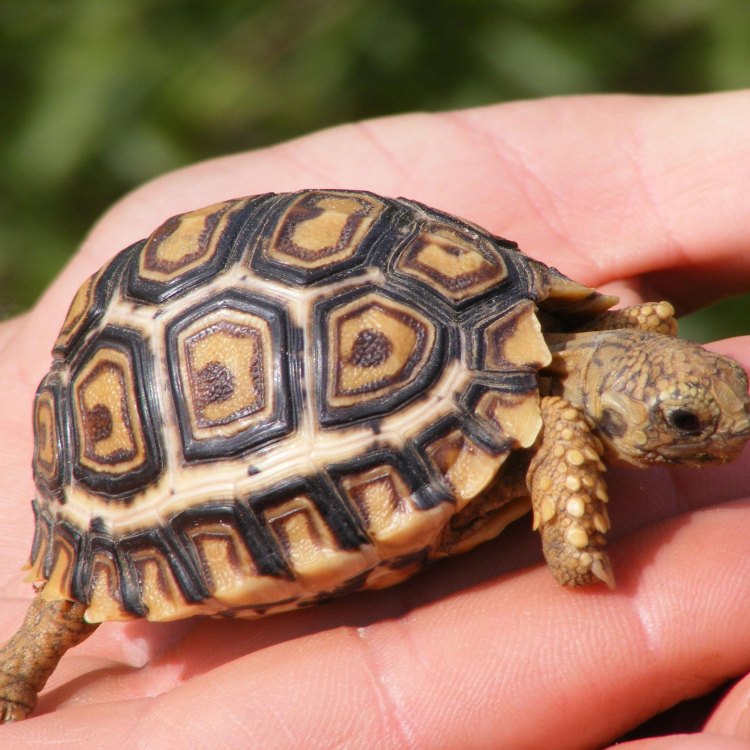
Stigmochelys pardalis
The Grand Survivor: Leopard Tortoise – A Fascinating Creature of the African Savanna
The vast and diverse landscapes of Africa are home to a multitude of fascinating creatures. One such creature is the leopard tortoise. With its distinctive high-domed shell and majestic yellow and black markings, the leopard tortoise is not only a beautiful sight but also a symbol of resilience and endurance.Leopard tortoises (Stigmochelys pardalis) are the fourth largest species of tortoise in the world, reaching an impressive adult size of up to 24 inches (60 cm) PeaceOfAnimals.Com. They are found in the savannas, grasslands, and semi-arid regions of Eastern and Southern Africa, with a range spanning from Sudan and Ethiopia all the way to South Africa and Namibia. Their name does not come from any physical resemblance to leopards, but rather from their unique shell markings, which resemble the spots of a leopard.
Their average lifespan of up to 100 years makes them one of the longest-lived tortoise species. But what makes the leopard tortoise truly unique is not just its size and longevity, but a multitude of other interesting features that make it a crucial part of its ecosystem.
Reproduction: The Circle of Life
As with all tortoises, leopard tortoises are oviparous, meaning they lay eggs to reproduce. Females can lay up to 30 eggs at a time, and these eggs take around 8 months to hatch. The nesting sites are carefully chosen – usually a sandy area where the eggs can be buried to protect them from predators and the elements.But the most fascinating aspect of leopard tortoise reproduction is the courtship behavior of the males. During the mating season, which typically runs from October to February, males engage in combat for the rights to mate with females Little Penguin. They use their extremely strong and sharp front legs to ram into each other, trying to flip their opponents over. This display of strength and dominance is not only crucial for mating success but also helps the males establish hierarchy and settle disputes.
Solitary Creatures: Masters of Survival
Leopard tortoises are solitary creatures, and they prefer to live on their own rather than in groups. They are diurnal, meaning they are most active during the day, and spend the majority of their time foraging for food. Their diet consists of plants and grasses, which they can gather with their powerful jaws and sharp beak. They are also known to burrow into the ground for shelter and protection from predators and the harsh African sun.Being masters of survival, leopard tortoises have adapted to withstand long periods of drought. They have the incredible ability to store water in their bladder, enabling them to go without drinking for months. This makes them well-suited to the arid and semi-arid regions they inhabit, where water can be scarce.
Threats and Conservation Efforts
Despite their impressive survival instincts, leopard tortoises are facing threats that are putting their population at risk. Habitat loss due to agricultural expansion and human settlement is one of the main threats to these creatures. As their natural habitats continue to shrink, leopard tortoises are forced to compete for limited resources, making it challenging for them to thrive.Another significant threat facing leopard tortoises is the illegal pet trade. These colorful and unique creatures are highly sought after as exotic pets, leading to indiscriminate capture and trade. This not only affects their populations in the wild but also puts them at risk of being mistreated and abandoned when their owners can no longer take care of them.
As a result of these threats, leopard tortoises have been listed as "vulnerable" on the International Union for Conservation of Nature (IUCN) Red List. This means that their population is declining, and urgent conservation efforts are needed to protect them.
Fortunately, several organizations and conservation groups are working tirelessly to protect and conserve these magnificent creatures. These efforts include creating protected areas and raising awareness about the importance of preserving leopard tortoise habitats. The ultimate goal is to ensure a healthy and stable population for generations to come.
The Impact on Ecosystems: Nature's Gardeners
Leopard tortoises play a vital role in their ecosystem, especially in seed dispersal. As they graze on plants and grasses, they also unintentionally help spread seeds to new locations, where they can grow and thrive. This makes them important "gardeners" of the savanna ecosystem, helping to maintain the delicate balance of nature.Their burrowing behavior also has an impact on the ecosystem. By digging into the ground, they create hiding places for smaller animals, such as insects and reptiles, and also aerate the soil, allowing for better water filtration and nutrient flow.
Human Use: Tradition and Exploitation
Along with being kept as pets, leopard tortoises have been used for traditional medicine in many African cultures for centuries. Different parts of the tortoise, including its meat, shell, and even blood, are believed to have healing properties and are used in various remedies. While the use of leopard tortoises in traditional medicine is deeply rooted in these cultures, it has also led to overexploitation and decline in their population.There is still much debate about the effectiveness and sustainability of using leopard tortoises in traditional medicine. However, it is essential to find a balance between cultural beliefs and conservation efforts to ensure the survival of these remarkable creatures.
The Circle of Life and Death: Natural Predators
Just like any other species in the wild, leopard tortoises also have natural predators. Lions, hyenas, and large birds of prey, such as eagles and falcons, are among the main predators of leopard tortoises. While their tough and sturdy shells provide excellent protection, it is not entirely foolproof. A tortoise caught off guard or flipped onto its back can become an easy meal for these predators.Despite the dangers they face in the wild, leopard tortoises have a remarkable ability to survive and thrive. Their resilient and adaptable nature has enabled them to survive for millions of years, and it is up to us to ensure that they continue to do so for many more.
In Conclusion
The leopard tortoise is a symbol of strength, resilience, and endurance. With its distinctive features, unusual behavior, and crucial role in its ecosystem, it is clear why this species has captured the interest and admiration of people around the world. But with these unique features come significant threats, putting the future of these creatures at risk. It is up to all of us to do our part in preserving and protecting the incredible leopard tortoise, ensuring that it continues to thrive in the wild for many years to come.
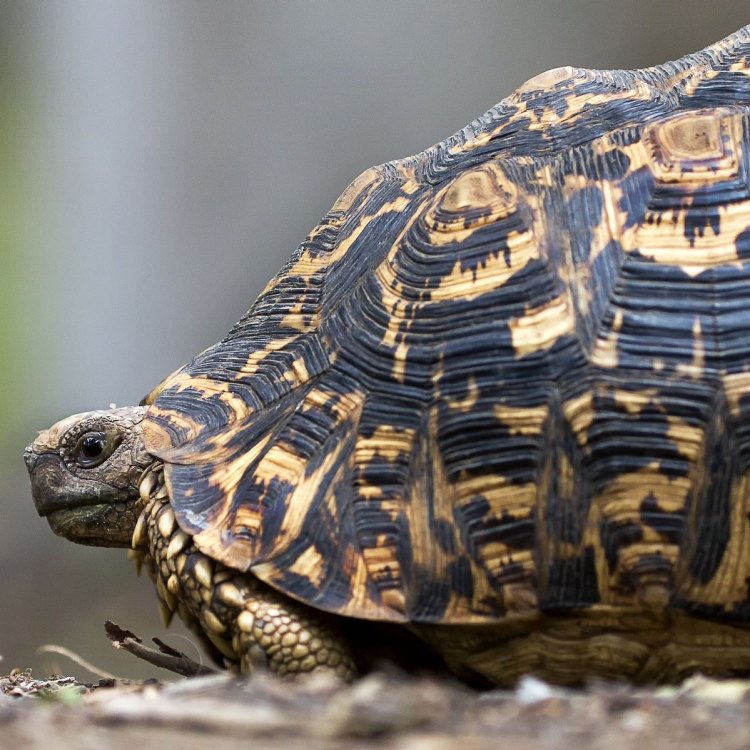
The Mighty and Magnificent Leopard Tortoise: Unveiling its Secrets
Disclaimer: The content provided is for informational purposes only. We cannot guarantee the accuracy of the information on this page 100%. All information provided here may change without prior notice.

